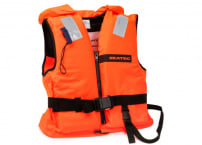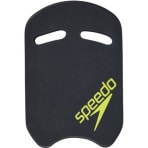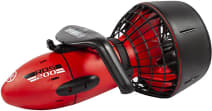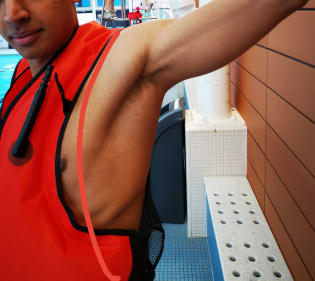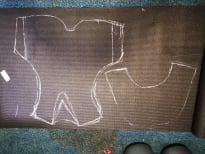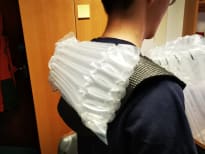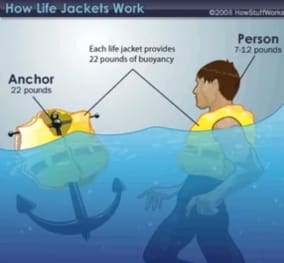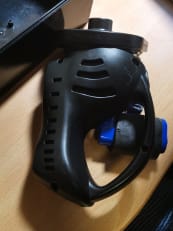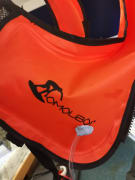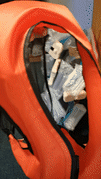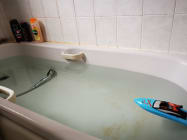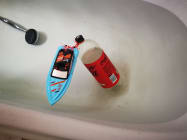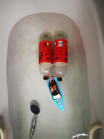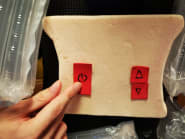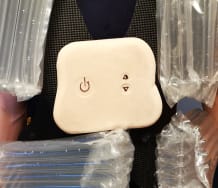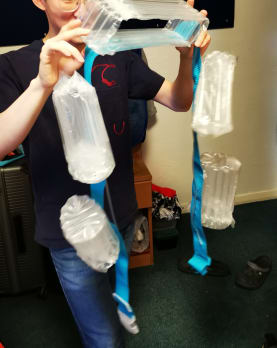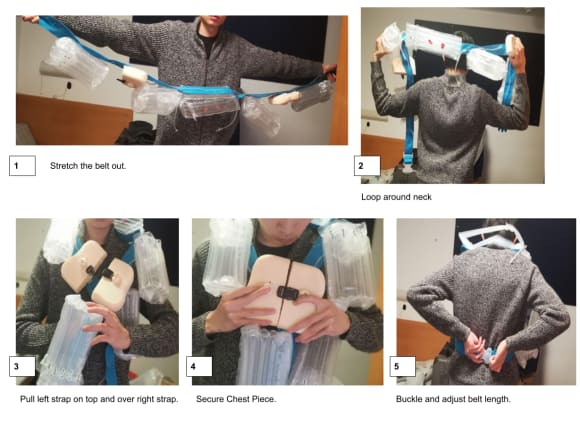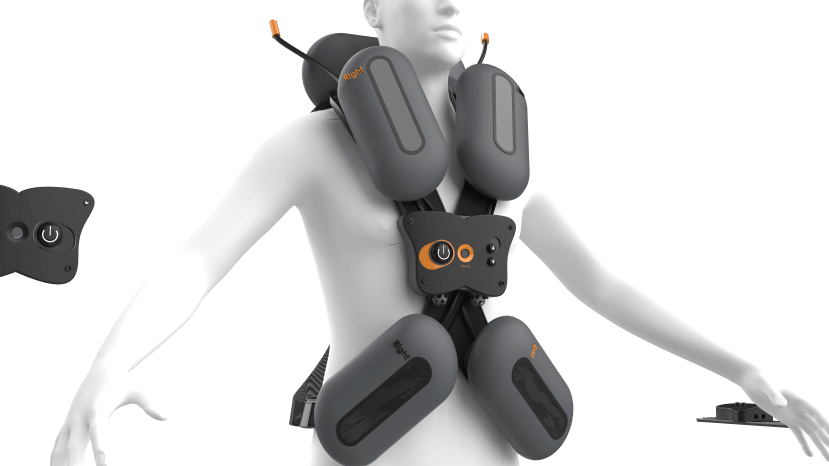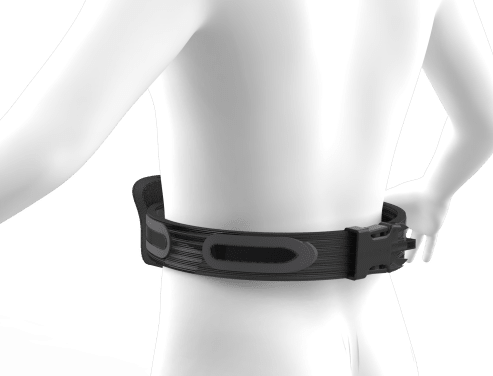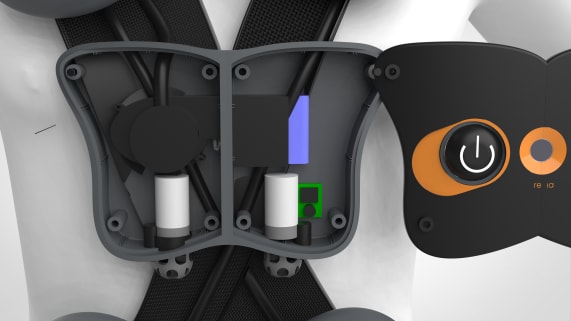Sirenia - Swim Confidence Boosting Propulsion Wearable
Follow articleHow do you feel about this article? Help us to provide better content for you.
Thank you! Your feedback has been received.
There was a problem submitting your feedback, please try again later.
What do you think of this article?
Intro - Why Sirenia?
I was never good at any sport. When I was learning how to swim, the first time I was told to go to the deep end of the pool by my instructor without my kickboard, it was a gruelling experience where I nearly drowned. I remember the feeling of dread as chlorinated water poured into my nose, filled my ears, seeped behind my goggles, and thinking; What a terrible idea it was to have gone swimming, and that I wouldn't do it again even if it was the last thing I could do.
Luckily, (or unluckily depending on how you look at it) under the encouragement of my parents and supportive guidance of my instructors, I wasn't allowed to give up. Today, I am forever grateful for this skill as it has opened me opportunities I never would have gotten otherwise and I want other people to have this opportunity as well.
Problem
This situation isn't unique to me and I know a lot of people that want to go swimming but can't because of their fear of drowning and that they never had the chance to properly learn to. In the UK, 1 in 3 adults can't swim and a larger number can't swim an entire 25m length properly. I want to give people the chance to learn swimming by themselves in a safe, supported environment, to build their confidence, give them control, and be something to come back to again and again, so they hopefully never give up this sport.
Competitor Products
The niche I am targeting in the market is a product line in between safety swimming products and fun energetic products.
In interviews conducted with friends, family and fellow university classmates there is sufficient data that suggests that people learning swimming would like to have products that support them and give them comfort in case they sink, but they feel it is hard to adjust the level of buoyancy of a life jacket to a degree that will allow them to swim without the constant uplift of a fully inflated lifejacket. Training tools such as the kickboard prevents proper arm movement and can drift away once you let go, it also uses harmful EVA foam that is difficult to recycle and can damage the sea life if disposed of incorrectly.
Likewise, they enjoy the idea of products that can potentially make swimming more interesting, however, feel they can't justify the price tag given these products don't provide beginners with a sense of safety in the water. Therefore a middle ground in between would create a market capable of catering to both these needs.
Methodology-
To ensure the product fully understands the scope of current problems and of the user's needs, a focus will be on exploring human factors; Ways to improve the product's usability, function and overall presentation.
1. User Testing
The main problem identified early on about the life jacket is that the arm movement space is limited. For a swimmer, a large part of a free-swimming experience when using a wearable is arm mobility, about a 180-degree zone should be free of any blockage, otherwise, it is uncomfortable.
A second point as mentioned before is the over buoyancy when fully expanded, which impedes any form of acceleration in water when trying to practice strokes, feeling like they're not going anywhere as a result.
Further movement-based tests, where the participant performs common strokes on both land and water have identified points of discomfort around the shoulder and uneven tightness under prolonged usage. These led to an initial prototype design that attempted to reduce material around identified regions and provide a more form-fitting structure.
Now we have the initial shape of our wearable and the space we have to work on to place the main components.
2. Functional Tests
Buoyancy Data
On the functional side, given that the design now reduces the amount of space available, we have to ensure it has the correct amount of buoyancy to keep a person afloat.
A standard lifejacket can hold up a 22-pound weight in water. Given that weight is reduced in water, a person is now between 7-12 pounds depending on their body fat. Approx 15 litres of uncompressed air is enough to provide that lift, this can be simulated with protective air pouches that hold a similar volume during testing.
Auto inflation
Fast adjustable buoyancy is a factor that will solve much of the problems from the original life jacket, this will allow inexperienced swimmers to set buoyancy in the water right to the level that they are comfortable with to begin swimming. To create this automatic inflation element there needs to be a suction and reverse suction mechanic. This includes a motor, fan blade, output point, battery and on/off switch. This was acquired and placed into a secure junction box where tubes stretch from within and attach into an inflatable life jacket to demonstrate how this can be achieved in actuality.
The overall inflation process took 25 seconds, compared to the 24 seconds timed from inflating manually. This is a problem that can be addressed with a stronger motor and more thorough sealing of the air tubes.
Motor Power Data
To understand and develop the 'propulsion' factor of the product, I acquired an understanding on a smaller scale of the necessary components and approximate space needed to house the internals by taking apart an R.C remote control boat.
There appeared to be 2 motors that delivered around 10 mNm, along with a battery, 2 'water sensors' that prevent the boat from turning on outside of water for safety and a PCB housing, all made waterproof.
Testing was then conducted in a 1.6-meter bathtub. Timed were the speeds to reach from one end to the other. The initial speed took 1.97 seconds to travel 1.6 meters.
To figure out a motor speed that will just be enough to move a person, 2 litres weights were added on twice and the same test was repeated. This data will allow us to extrapolate and get an estimate for how much force is needed to move a human weight. With each weight added the boat travelled about 2 seconds slower.
As a final test, a box is mounted and secured over the R.C. boat to mimic how the propulsion unit might appear and perform when worn on the user. The less aerodynamic shape gave little to no speed reduction.
3. Ergonomics Tests
The overall housing design is tested with users, including the button shapes, placements and form of the box. The extruded buttons were found to be the easiest to press and find given the user often would not look down to press the button, the distinct shapes also help to remember.
A softer shape is also developed, specifically curved to allow arm movement without brushing into the box. Grooves are added (Highlighted in red) to allow fingers to slide in more easily and find the correct controls.
Reducing Overall Structure
Given the positive reception for a more form-fitting vest, it is then reduced and changed into a belt design, with air pouches remaining the same size as before. This will allow more portability and even more form-fitting, there can be better adjustability in tightening and loosening the belt.
Step by Step Wearing
The prototype shows that it can be worn in 5 steps. Going around the neck and covering areas that previously had air pockets to provide adequate and sufficient buoyancy for the user.
Final Design
The final concept takes into account the adjustable buoyancy, with air tubes stretching out to take air from the surface, a small motor segment that delivers a small boost for the user and slightly enhancing speed, and more mobility in the arm region to give mimic a free-swimming experience without a life jacket. It achieves the aims set initially by users.
The design has the potential to turn into a belt and allow users to wear it around them when desiring to remove the life jacket, and not needing them to place on the outsides.
The internal components consist of a fan, 2 motors, and tubing, electromagnetic contact plate to transfer charge from one side of the box to the other, PCB, and rubber lining.
Environment
The central frame can use recycled plastics to further help the environment. Its main draw however is that the product's intended durability compared to a normal kickboard and other cheaper training products will allow it to have a far greater lifespan and therefore less harmful waste generated from disposing of EVA foam and other plastic products.
Conclusion and Future Development Potential
A lower-cost version of this product will be extremely helpful for areas without access to swimming equipment training teachers and facilities, and this can act as an individual trainer for them. Ways to reduce cost would be by potentially making the inflation mechanic manual and look for ways to inflate the product with less air required or by removing the motor itself and making the design more hydro-dynamic.
During testing of this product, certain functionality and safety aspects could not be made accurate due to lacking the resources to do a live test in a swimming pool to better determine functional requirements such as if the motor strength will provide stable propulsion and battery life.
To improve further, certain elements revolving around safety can be considered. The addition of sensors that momentarily turn off the ability to draw in air for the air tubes, if it detects that the user is submerged will make it so that the air pouches do not fill with water if the user accidentally presses the inflate buttons when underwater. Another element would be having emergency LEDs that light up if the sensor detects the user has been submerged underwater for an abnormal period of time, drawing attention to lifeguards.
During testing, some users responded that the long belt-like design of this product is somewhat difficult to put on the first time, and they fear it might tangle up. In this case, a central harness can be created that perhaps locks the belt into a default loop shape that helps users put it.
These are some of the things that can be added, thank you for reading and I look forward to further developing this in the future.



